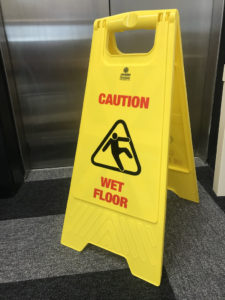The law in Pennsylvania, commonly referred to as “the coming and going rule”, holds that traveling to and from work is not in the course of employment. Mansfield Bros. Painting v. WCAB (German), 72 A.3d 842 (Pa. Cmwlth. 2013). There are, however, exceptions to this broad ruling. Those exceptions are:
- The worker has no fixed place of work.
- The worker is on a special assignment for the employer.
- The employment contract specifically included transportation to and from work.
- Unique circumstances in that the worker was furthering the business of the employer.
(Source): Peterson v. WCAB (PRN Nursing Agency), 597 A.2d 1116 (Pa. 1991); Peer v. WCAB (B&W Constr.), 503 A.2d 1096 (Pa. Cmwlth 1986).
Here are some real life, practical examples of cases where commuting was found to be within the worker’s course of employment. A medical doctor was required to travel between two fixed places, as part of her regular job duties. One day, while traveling between the two offices, she was injured. The Court found that because her job required her to travel between the two offices, that she was within the course of her employment. Ruth Fam. Med. Ctr. v WCAB (Steinhouse), 718 A.2d 397 (Pa. Cmwlth. 1998).
Another example is that a Pennsylvania State Trooper was going to work on a motorcycle when another car making an illegal turn went right in front of him. Because of the illegal turn, the Trooper was injured. What made the court determine that the Trooper was in the course of his employment was that the Trooper testified that prior to the impact of the accident, he intended to arrest the person for the illegal turn. Pennsylvania State Police v. WCAB (Dick), 694 A.2d 1181 (Pa. Cmwlth 1997).
Next are some examples of where commuting was not within the scope of employment or the workers’ employment terms did not include transportation. A worker for a painting company was sent to work on one, and only one project for its duration, and therefore was found to have a fixed place of employment. That worker sustained injuries while commuting from work, which were found not to work related. Mansfield Bros. Painting v. WCAB (German), 72 A.3d 842 (Pa. Cmwlth. 2013).
In the case of Fonder v. WCAB (Fox Integrated), 842 A.2d 512 (Pa. Cmwlth. 2004), the worker fell asleep at the wheel on his way home after an exceptionally long shift to sleep, and get ready for his next shift. Although he suffered work injuries from the motor vehicle accident, he did not qualify for benefits under any exception to the coming and going rule.
According to the case of Bechtel Power Corp. v. WCAB (Postlethwait), 648 A.2d 1266 (Pa. Cmwlth. 1994), the employee’s injury suffered while traveling home from work was not in the course of employment. In this particular case, even though the employee had a per diem travel allowance, as provided by his union bargaining agreement, this was not enough to prove that transportation was indeed included in that contract.
Every case is different and unique, so the facts have to be reviewed and analyzed to determine whether a traveling injury is indeed covered by Pennsylvania workers’ compensation. It is best to consult an experienced workers’ compensation lawyer to help out in this regard.









